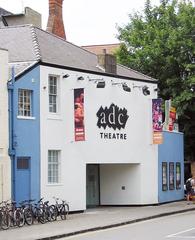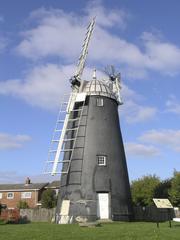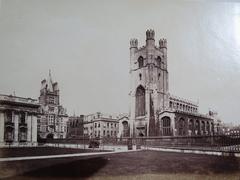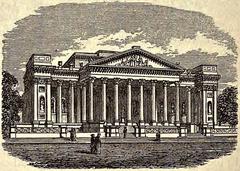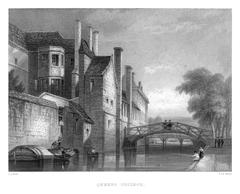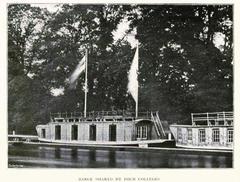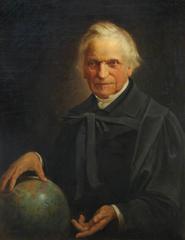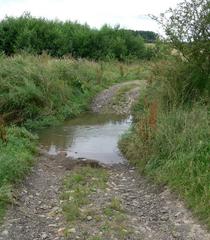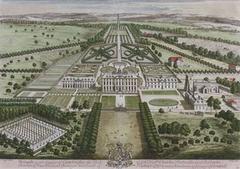Visiting Beechwoods: Tickets, Hours, and Historical Significance in Cambridge
Date: 23/07/2024
Introduction
The Beechwoods Nature Reserve, located in the southern part of Cambridge, United Kingdom, is a hidden gem known for its serene environment and rich ecological diversity. This ancient woodland, primarily composed of beech trees, offers a haven for a variety of flora and fauna, making it a unique and cherished green space. The Beechwoods have a storied history that dates back to the early 19th century when the land was initially used for agricultural purposes before being transformed into a woodland area (CambridgePPF). Over the years, the Beechwoods have become a popular destination for locals and tourists alike, offering a range of recreational activities, educational opportunities, and conservation efforts. Managed by the Cambridge City Council in partnership with local conservation groups, the Beechwoods continue to thrive as a vital ecological and cultural asset (Cambridge City Council). This comprehensive guide aims to provide detailed information on the history, visitor information, conservation efforts, and travel tips for anyone planning to visit the Beechwoods.
Table of Contents
- Introduction
- Early History and Formation
- Development in the 19th Century
- 20th Century Conservation Efforts
- Ecological Significance
- Cultural and Recreational Importance
- Modern-Day Management
- Visitor Information
- Travel Tips and Nearby Attractions
- Special Events and Tours
- FAQ Section
- Conclusion
Exploring Beechwoods in Cambridge - History, Visitor Information, and Conservation
Early History and Formation
The origins of the Beechwoods can be traced back to the early 19th century when the land was part of the extensive estates owned by the local gentry. Initially used for agricultural purposes, the land was gradually transformed into a woodland area. Beech trees were planted extensively to enhance the landscape and provide a habitat for wildlife.
Development in the 19th Century
Throughout the 19th century, the Beechwoods saw significant development. Local landowners, recognizing the importance of preserving natural habitats, managed the land and planted beech trees extensively. This led to the formation of the dense woodland that exists today, making it a popular spot for local residents and visitors.
20th Century Conservation Efforts
In the 20th century, the Beechwoods faced challenges such as deforestation and urban development pressures. Conservation efforts were initiated, and in the 1960s, the area was designated as a Local Nature Reserve (LNR). This designation helped protect the woodland from development and ensured its preservation for future generations.
Ecological Significance
The Beechwoods are home to a diverse range of flora and fauna. The beech trees provide habitats for various species of birds, insects, and mammals. The woodland floor, covered with a rich layer of leaf litter, supports a variety of fungi and invertebrates. As an important ecological site, the Beechwoods play a crucial role in maintaining the local ecosystem by supporting biodiversity and mitigating urbanization effects.
Cultural and Recreational Importance
The Beechwoods offer a network of walking trails, making it a popular destination for recreational activities such as birdwatching, photography, and nature study. The tranquil environment also serves educational purposes, with local schools and organizations conducting field trips to teach students about conservation and the natural environment.
Modern-Day Management
Today, the Beechwoods are managed by the Cambridge City Council in partnership with local conservation groups. Management efforts include tree planting, habitat restoration, and invasive species control. The area is monitored for signs of disease and environmental stress, with measures taken to address any issues.
Visitor Information
Opening Hours
The Beechwoods are open year-round, providing a serene escape in every season.
Admission Fees
There is no admission fee, making the Beechwoods an accessible destination for everyone.
Guidelines for Visitors
Visitors are encouraged to stay on designated trails to minimize their impact on the ecosystem. Dogs are welcome but must be kept on a leash to prevent disturbance to wildlife.
Travel Tips and Nearby Attractions
The Beechwoods are easily accessible by public transport and car. Nearby attractions include the Cambridge University Botanic Garden and Wandlebury Country Park, offering additional opportunities for nature exploration.
Special Events and Tours
The Beechwoods periodically host guided tours and special events focusing on local flora and fauna. Check the Cambridge City Council’s website for upcoming events.
FAQ Section
Q - What are the Beechwoods’ visiting hours?
A - The Beechwoods are open year-round.
Q - Is there an admission fee to visit the Beechwoods?
A - No, visiting the Beechwoods is free.
Q - Are dogs allowed in the Beechwoods?
A - Yes, dogs are welcome but must be kept on a leash.
Q - Are there guided tours available?
A - Yes, check the Cambridge City Council’s website for information on guided tours and special events.
Conclusion
The Beechwoods in Cambridge, United Kingdom, are a testament to the importance of conservation and the value of preserving natural habitats. With a rich history dating back to the 19th century, the Beechwoods have evolved into a cherished green space. Through ongoing management and conservation efforts, the Beechwoods continue to thrive, providing a haven for wildlife and a peaceful retreat for visitors.
For more information on the Beechwoods and to plan your visit, refer to the Cambridge City Council’s official website.
References
- Cambridge Past, Present & Future. (n.d.). Beechwoods. Retrieved from CambridgePPF
- Cambridge City Council. (n.d.). Parks and open spaces. Retrieved from Cambridge City Council
- Historic England. (n.d.). Beechwoods. Retrieved from Historic England
- Visit Cambridge. (n.d.). Attractions. Retrieved from Visit Cambridge
